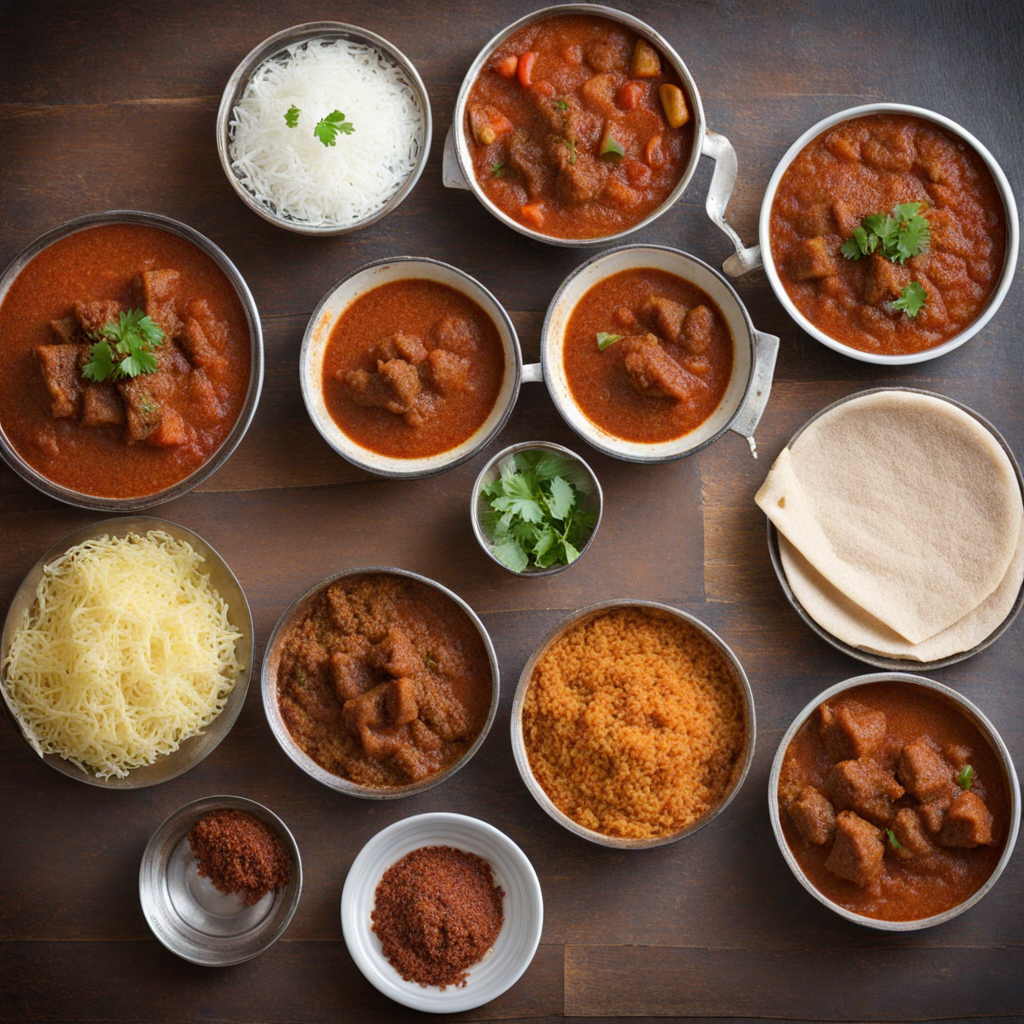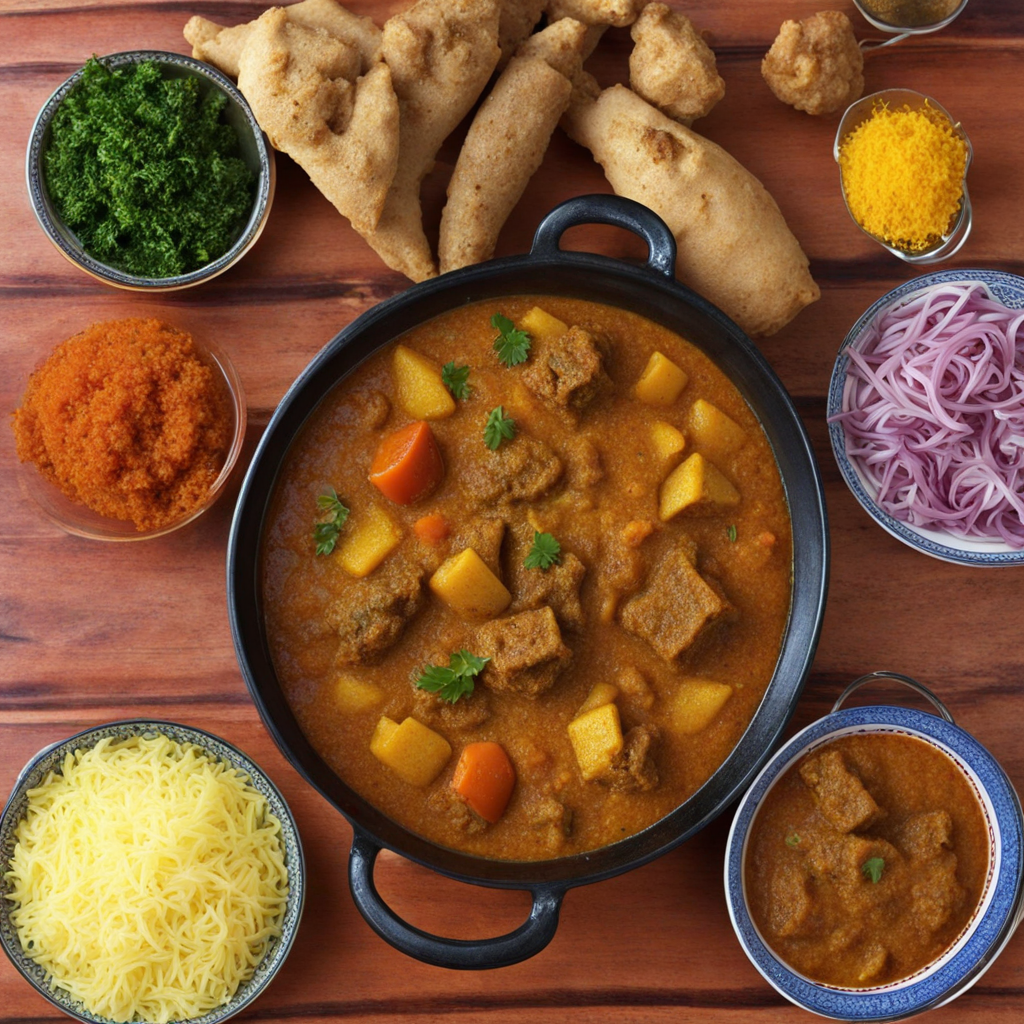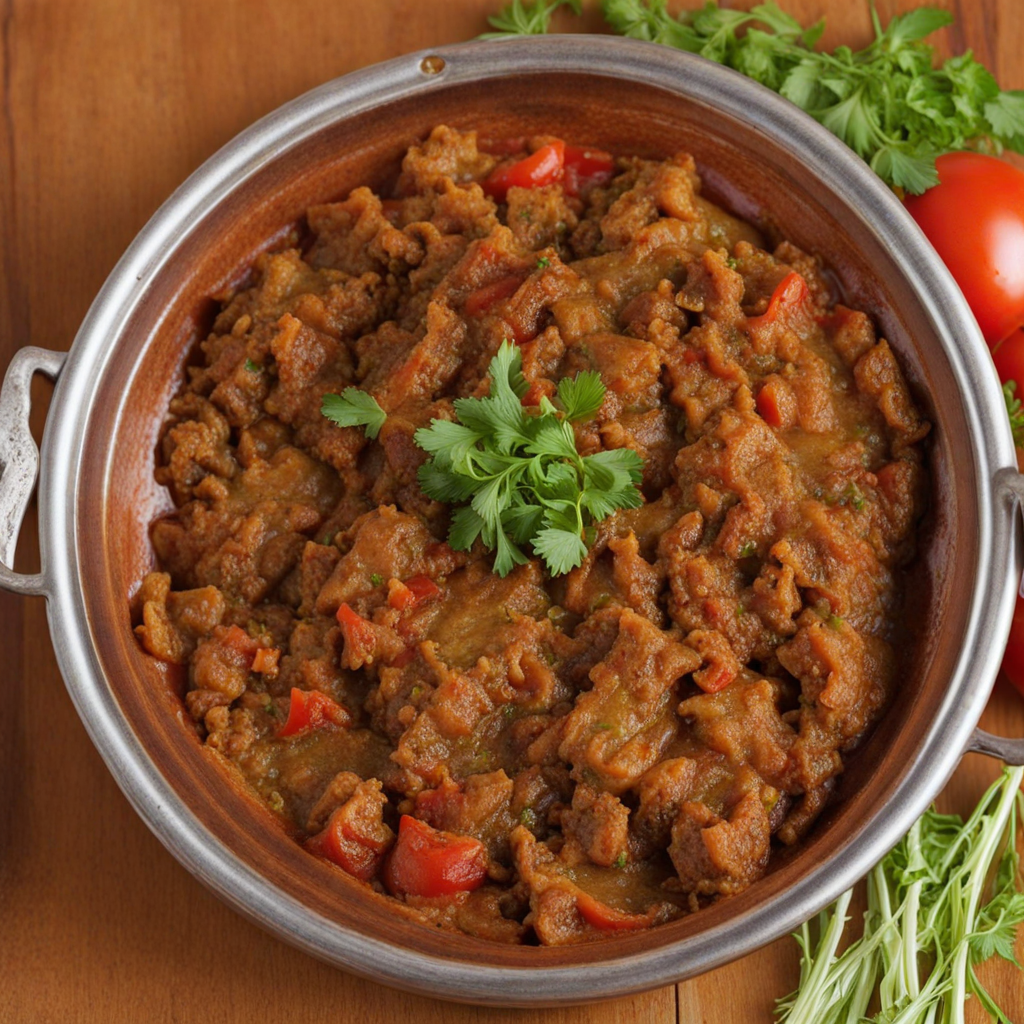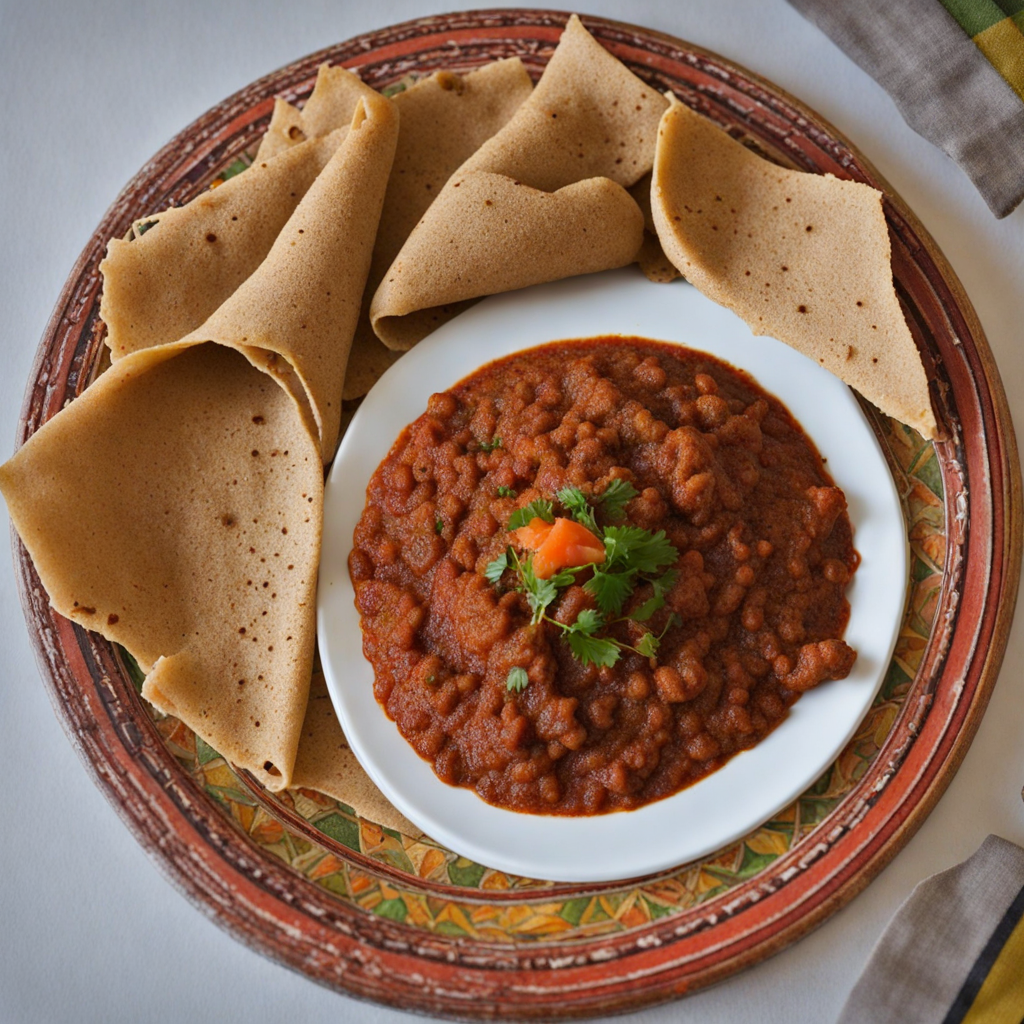Zigni
Zigni is a traditional Eritrean dish that embodies the rich flavors and spices of East African cuisine. This hearty stew is primarily made with beef or lamb, simmered to tender perfection in a vibrant sauce that is deeply infused with berbere, a spice blend that includes chili peppers, garlic, ginger, and a mix of other aromatic spices. The result is a dish that balances heat and depth, offering a complex flavor profile that is both comforting and exhilarating, perfect for those seeking a culinary adventure. Often served with injera, a sourdough flatbread made from teff flour, Zigni presents a unique dining experience. The injera acts as both a plate and a utensil, allowing diners to scoop up the stew and enjoy its rich, spicy goodness. The tangy flavor of the injera beautifully complements the warm and robust flavors of the Zigni, making each bite a delightful exploration of texture and taste. The communal aspect of sharing this dish adds to the overall experience, fostering a sense of connection and enjoyment among those at the table. In addition to its primary meat component, Zigni can also incorporate vegetables like carrots and potatoes, which absorb the bold flavors of the stew and enhance its heartiness. Some variations may include lentils or chickpeas, catering to diverse dietary preferences. Whether you are indulging in the classic version or a vegetarian adaptation, Zigni promises a satisfying meal that showcases the culinary heritage of Eritrea, inviting you to discover and appreciate the warmth and hospitality that the dish represents.
How It Became This Dish
The Culinary Journey of ዝግኒ (Zgni): A Taste of Eritrea #### Origins The dish known as ዝግኒ (Zgni) traces its roots deep into the rich tapestry of Eritrean culinary heritage. Eritrea, located in the Horn of Africa, boasts a diverse array of ethnic groups, each contributing to the region's unique food landscape. Zgni is primarily associated with the Tigrinya people, one of the largest ethnic groups in Eritrea. The name “Zgni” itself is derived from the Tigrinya word that means "to cook" or "to boil," reflecting the dish's preparation method. Zgni is typically made from a base of meat—often beef or lamb—that is marinated with a blend of spices, including berbere, a key spice mix in Eritrean cuisine made from chili peppers, garlic, ginger, and various other spices. The dish is often accompanied by injera, a sourdough flatbread that serves as both a plate and a utensil. The origins of injera can be traced back thousands of years, with various forms of this fermented bread present in the diets of the ancient civilizations of the region. Together, Zgni and injera create a harmonious balance of flavors and textures, embodying a quintessential Eritrean meal. #### Cultural Significance Zgni holds a significant place in the cultural and social fabric of Eritrea. It is more than just a meal; it is a symbol of hospitality and community. Traditionally, Zgni is prepared during festive occasions, family gatherings, and important celebrations, such as weddings and religious holidays. The act of cooking and sharing Zgni represents a communal experience, where families come together to honor their bonds and heritage. Eritrean culture places a strong emphasis on sharing food as a form of connection and expression of love. The communal style of eating, where diners gather around a large platter of injera topped with Zgni, fosters a sense of togetherness and kinship. This practice transcends mere sustenance; it embodies the values of unity, generosity, and the importance of family ties. Religious practices also play a role in the preparation and consumption of Zgni. For instance, during fasting periods observed by the Eritrean Orthodox Church, variations of Zgni may be made using vegetarian ingredients, aligning with the dietary restrictions of the fast. This adaptability of the dish speaks to its integral role in both everyday life and sacred traditions. #### Development Over Time As Eritrea navigated its complex historical landscape—from ancient kingdoms to colonial rule—its cuisine evolved, influenced by various cultures, trade routes, and sociopolitical changes. The Italian colonization in the late 19th and early 20th centuries introduced new ingredients and cooking techniques that gradually integrated into Eritrean culinary practices. Italian influences can be seen in dishes that include pasta and sauces, but Zgni maintained its traditional roots, with its preparation largely unchanged. In the late 20th century, Eritrea's struggle for independence from Ethiopia and subsequent civil war impacted the culinary landscape. The hardships faced during this period led to a greater emphasis on local and traditional foods, as people sought comfort in familiar flavors and communal meals. Zgni emerged as a dish that not only nourished the body but also provided solace and a sense of identity during turbulent times. The post-independence era brought about a revival of Eritrean culture and heritage, with food playing a crucial role in this renaissance. As Eritrea redefined its national identity, Zgni became a symbol of pride, reflecting the resilience and culinary prowess of its people. Eritrean diaspora communities around the world have also embraced Zgni, introducing it to international audiences and celebrating their heritage through food. #### Modern Interpretations In contemporary Eritrea, Zgni continues to be a beloved dish, with home cooks and restaurants alike offering their own interpretations. While traditional recipes remain cherished, there is a growing trend toward innovation, with chefs experimenting with variations that incorporate different meats, vegetarian options, and even fusion elements that blend Eritrean and global cuisines. The rise of social media has also played a role in popularizing Zgni among younger generations and the diaspora. Food bloggers and influencers showcase vibrant images and videos of Zgni, celebrating its preparation and inviting others to experience the flavors of Eritrea. This digital exposure has led to increased interest in Eritrean cuisine, spurring a resurgence in traditional cooking practices and fostering a sense of community among those who share a love for Zgni. #### Conclusion The story of ዝግኒ (Zgni) is a testament to the resilience and richness of Eritrean culture. From its ancient roots to its modern interpretations, Zgni reflects the evolving identity of a nation shaped by its history, community, and culinary traditions. It serves as a bridge between the past and the present, connecting generations through the shared experience of food. Zgni is not just a dish; it is an embodiment of Eritrea’s spirit, a celebration of its people, and an invitation to gather around the table. As Eritrea continues to flourish and share its culture with the world, Zgni will undoubtedly remain a cherished symbol of its culinary heritage—a dish that tells the story of a people, their struggles, and their triumphs, one bite at a time.
You may like
Discover local flavors from Eritrea







